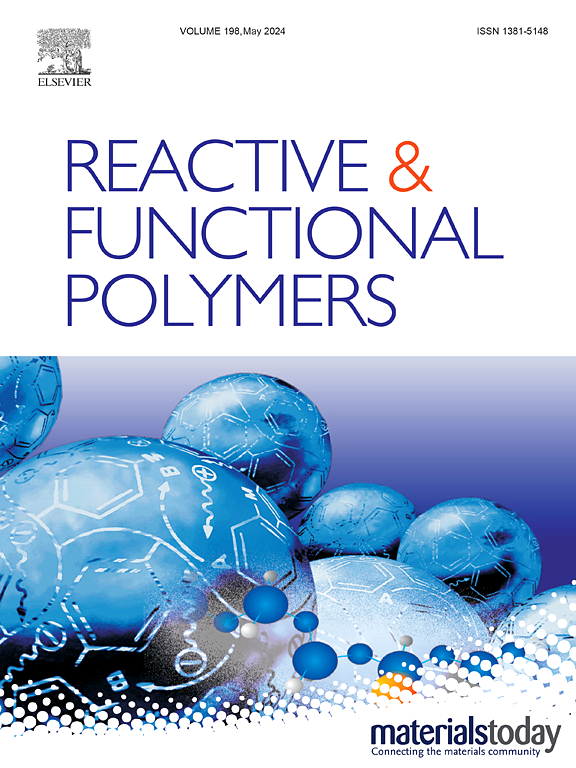Multilayer gradient chitosan fiber scaffolds for skin tissue regeneration with enhanced mechanical strength and cellular infiltration
IF 4.5
3区 工程技术
Q1 CHEMISTRY, APPLIED
引用次数: 0
Abstract
Using the solution blow spinning technique, a trilayer structure scaffold was developed for skin tissue engineering. The scaffold, composed of chitosan/polyethylene oxide (CHI/PEO) fibers, mimicking the skin's natural structure, featuring a fiber diameter gradient ranging from 300 to 1200 nm and controlled porosity. Neutralization with potassium carbonate solution stabilized the chitosan-based fibers and enhanced their mechanical properties. The subsequent removal of PEO during neutralization created a porosity gradient (80–50 %) across the scaffold layers, resulting in interconnected pores essential for cell infiltration and nutrient transport. The neutralized scaffolds enhanced mechanical performance with an ultimate tensile strength of 29.4 ± 4.8 MPa and Young's modulus of 6.5 ± 1.1 MPa. The toughness was found to be 2.3 ± 1.0 MJ/m3.
The gradient design closely mimics aspects of the skin's extracellular matrix. It substantially enhances the scaffold's mechanical integrity—doubling tensile strength, Young's modulus, and toughness compared to the as-spun structure—while preserving the essential flexibility required for dynamic wound environments.
In vitro evaluations using co-cultures of normal human dermal fibroblasts (NHDF) and human epidermal keratinocytes (HEKa) demonstrated suitable cell viability, adhesion, and proliferation on the scaffold. Moreover, confocal imaging confirmed HEKa cellular infiltration throughout the more porous scaffold parts and dense NHDF layers on the less porous fiber layer, effectively mimicking the spatial organization of native skin layers.
Our results underscore the significant potential of this gradient chitosan fiber scaffold as a scalable and versatile platform for skin tissue engineering. This innovative scaffold offers a promising new strategy for accelerating wound healing and achieving durable tissue regeneration by seamlessly integrating superior mechanical performance with enhanced cellular dynamics.

求助全文
约1分钟内获得全文
求助全文
来源期刊

Reactive & Functional Polymers
工程技术-高分子科学
CiteScore
8.90
自引率
5.90%
发文量
259
审稿时长
27 days
期刊介绍:
Reactive & Functional Polymers provides a forum to disseminate original ideas, concepts and developments in the science and technology of polymers with functional groups, which impart specific chemical reactivity or physical, chemical, structural, biological, and pharmacological functionality. The scope covers organic polymers, acting for instance as reagents, catalysts, templates, ion-exchangers, selective sorbents, chelating or antimicrobial agents, drug carriers, sensors, membranes, and hydrogels. This also includes reactive cross-linkable prepolymers and high-performance thermosetting polymers, natural or degradable polymers, conducting polymers, and porous polymers.
Original research articles must contain thorough molecular and material characterization data on synthesis of the above polymers in combination with their applications. Applications include but are not limited to catalysis, water or effluent treatment, separations and recovery, electronics and information storage, energy conversion, encapsulation, or adhesion.
 求助内容:
求助内容: 应助结果提醒方式:
应助结果提醒方式:


